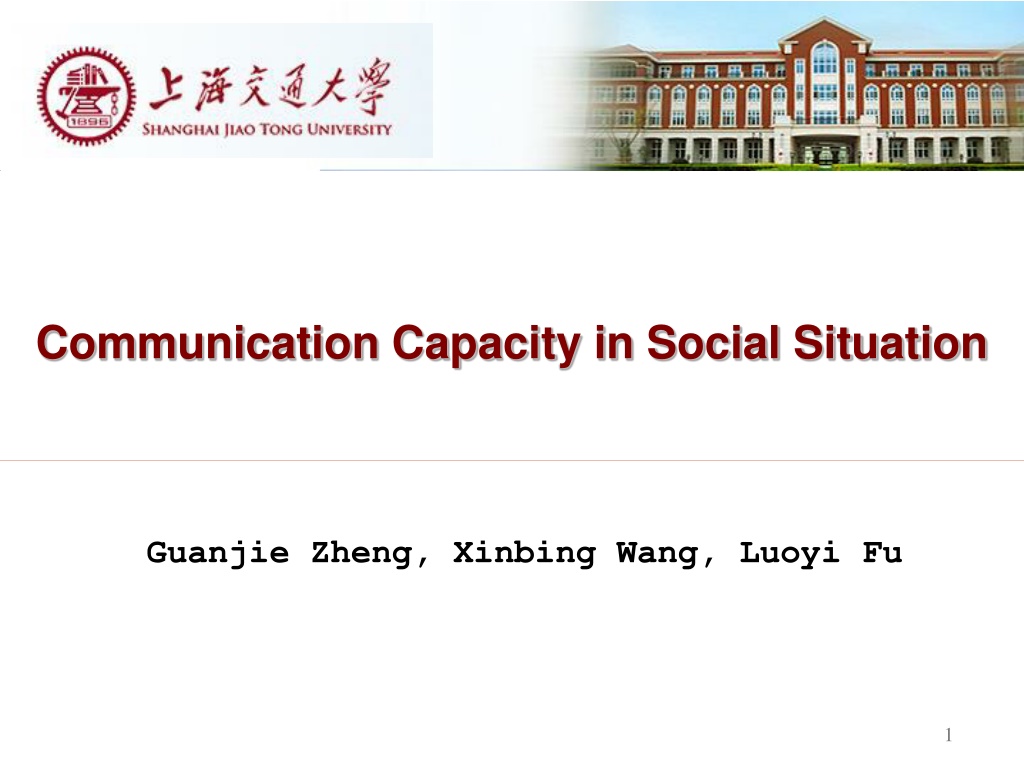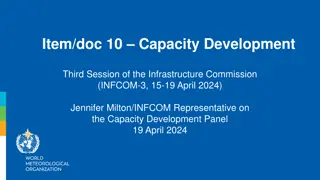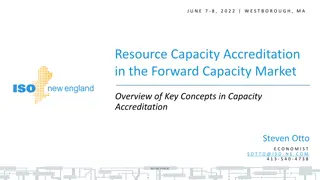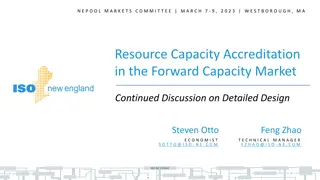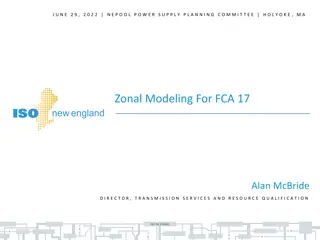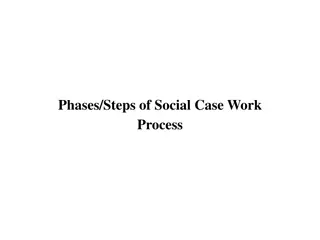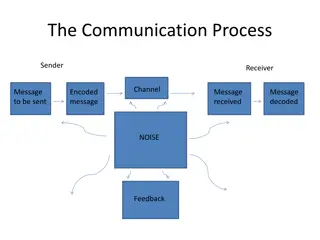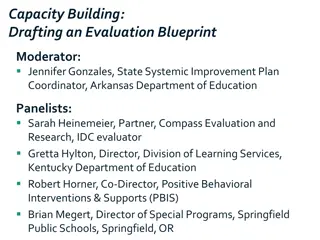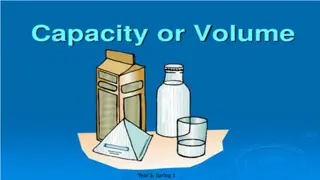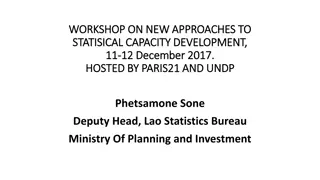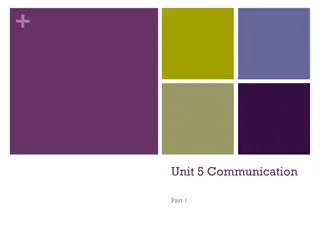Communication Capacity in Social Situation
In this research, the analysis and simulation of communication capacity in social situations are explored, focusing on network models, node capacity, mobility patterns, and more. Motivated by real-life scenarios, the study delves into the impact of inhomogeneity on communication dynamics. Various models and parameters are investigated to assess throughput and efficiency in wireless networks, shedding light on the nuances of node behaviors and transmission ranges. The study concludes with insights for future work in enhancing communication capacities in diverse social contexts.
Download Presentation

Please find below an Image/Link to download the presentation.
The content on the website is provided AS IS for your information and personal use only. It may not be sold, licensed, or shared on other websites without obtaining consent from the author.If you encounter any issues during the download, it is possible that the publisher has removed the file from their server.
You are allowed to download the files provided on this website for personal or commercial use, subject to the condition that they are used lawfully. All files are the property of their respective owners.
The content on the website is provided AS IS for your information and personal use only. It may not be sold, licensed, or shared on other websites without obtaining consent from the author.
E N D
Presentation Transcript
Communication Capacity in Social Situation Guanjie Zheng, Xinbing Wang, Luoyi Fu 1
Outline Introduction Introduction Network Model Network Model Analysis of Analysis of No No- -jump jump Situation Situation Analysis of Analysis of Jump Jump Situation Situation Simulation Simulation Conclusion and Future work Conclusion and Future work 2 2
Background Per Node Capacity When n identical randomly located ndoes, each capable of transmitting average W bits per second and using a fixed range, form a wireless network, the throughput ? ? is defined as the average maximum bit.meters per second a node can achieve. ? P.Kumar ? = ?( ? ????) D. Tse in Mobility ? = ?(?) Inhomogeneous Model In recents works, some inhomogenous model are proposed. Home point, node ? ? = ???(? ?,?)/A 3
Motivation Inhomogeneity Prevalent in real life Fans, residents Mobility i.i.d jump due to the attraction Applications Dissemination of a disease Spread of a rumor Conversion of a fan Migration 4
Outline Introduction Introduction Network Model Network Model Analysis of Analysis of No No- -jump jump Situation Situation Analysis of Analysis of Jump Jump Situation Situation Simulation Simulation Conclusion and Future work Conclusion and Future work 5 5
NetworkModel Parameters R the equivalent radius of the whole region, which is a wraping-around plate r the distance of a node from its home point x the distance of a node from a home point d the transmission range of a node n the overall number of the nodes m the number of home points Uniform distribution for home points ? ? = ??? 6
NetworkModel Power-Law Model (PL) ? ?? ,? > ?(?) ?(?) ?? ,? ? ? ? ? ? =? ? Exponential Model ? ? =? ?? ???? 7
MobilityModel We devide the time into slots. At the beginning of every slot, the node move according to the model. i.i.d + jump i.i.d for home points At the beginning of every slot, the home points are reshuffled. Jump+i.i.d At the beginning of every slot, the node change their home point according to the Attraction . After the jump, every node are reshuffled within their new home points. 9
Outline Introduction Introduction Network Model Network Model Analysis of Analysis of No No- -jump Situation jump Situation Analysis of Analysis of Jump Jump Situation Situation Simulation Simulation Conclusion and Future work Conclusion and Future work 10 10
PL Model Strict Derivation Five circumstances Even the simplest one is uncalculatable. Approximation Algorithm ?? (? ?????)?+(?????)? ?? ? ? ???? ? ? = ? ? ? ? ???? ? ? ???? ? ???????? ???? ? ???????? ? ? ? ? = ?(? ?) d R x 11
PL Model ? = ?(? ?) Using the conclusion of D. Tse, we obtain In no relay circumstance ? ? ? = ? ? ? ? = ? In relaying circumstance(just one relay for one transmission) ? ? = ? ? ? = ? ? Though under inhomogeneous situation, we obtain the same capacity performance with the homogeneous one! d R x 12
Exponential Model Using the same methodology, we can obtain In no relay circumstance ? ? ? = ? ? ? ? = ? In relaying circumstance(just one relay for one transmission) ? ? = ? ? ? = ? ? Actually, we can make the proof of this for any distribution. d R x 13
Exponential Model Using the same methodology, we can obtain In no relay circumstance ? ? ? = ? ? ? ? = ? In relaying circumstance(just one relay for one transmission) ? ? = ? ? ? = ? ? Actually, we can make the proof of this for any distribution. d R x 14
Outline Introduction Introduction Network Model Network Model Analysis of Analysis of No No- -jump jump Situation Situation Analysis Analysis of of Jump Jump Situation Situation Simulation Simulation Conclusion and Future work Conclusion and Future work 15 15
Analysis of Jump Situation The jump probability ? ??? ???? ? ??? ???? ? ? = ? ? ? ? ? ? ??? ?+ ?(? ?)?? ?] = ???? ?)[ ???(?? ? ? where ? = ??, b=g(n) ? = ?(? ? ? ?), when ? < ? < ? d2 d1 16
Outline Introduction Introduction Network Model Network Model Analysis of Analysis of No No- -jump jump Situation Situation Analysis of Analysis of Jump Jump Situation Situation Simulation Simulation Conclusion and Future work Conclusion and Future work 18 18
Simulation Capacity of no-jump situation 19
Simulation Jump 20
Outline Introduction Introduction Network Model Network Model Analysis of Analysis of No No- -jump jump Situation Situation Analysis of Analysis of Jump Jump Situation Situation Simulation Simulation Conclusion and Future work Conclusion and Future work 21 21
Conclusion The capacity and delay performance of inhomogeneous social ad hoc network is almost the same with the ones of homogeneous one The inhomogeneity decrease the jump mobility, and may lead to the change of capacity. 22
Future Work Derive the capacity and delay trade off in the inhomogeneous S-D chosen situation Make the center inhomogeneous Eg. Add some weight, change the range of each center Investigate the control of this model in real life Consider the multicast situation 23
References [1] P. Gupta and P. Kumar, The capacity of wireless networks, IEEE Transactions on Information Theory, vol. 46, no. 2, pp. 388 404, 2000 [2] M. Grossglauser and D. Tse, Mobility increases the capacity of ad hoc wireless networks, IEEE/ACM Transactions on Networking, vol. 10, no. 4, pp. 477 486, 2002 [3] Garetto, M.; Leonardi, E., "Restricted Mobility Improves Delay- Throughput Tradeoffs in Mobile Ad Hoc Networks," Information Theory, IEEE Transactions on , vol.56, no.10, pp.5016,5029, Oct. 2010 [4] S Yao, X Wang, X Tian, Q Zhang, Delay-Throughput Tradeoff with Correlated Mobility of Ad-Hoc Networks, in Proc. IEEE INFOCOM, Toronto , Canada, April 2014. 24
Thank you! 25
